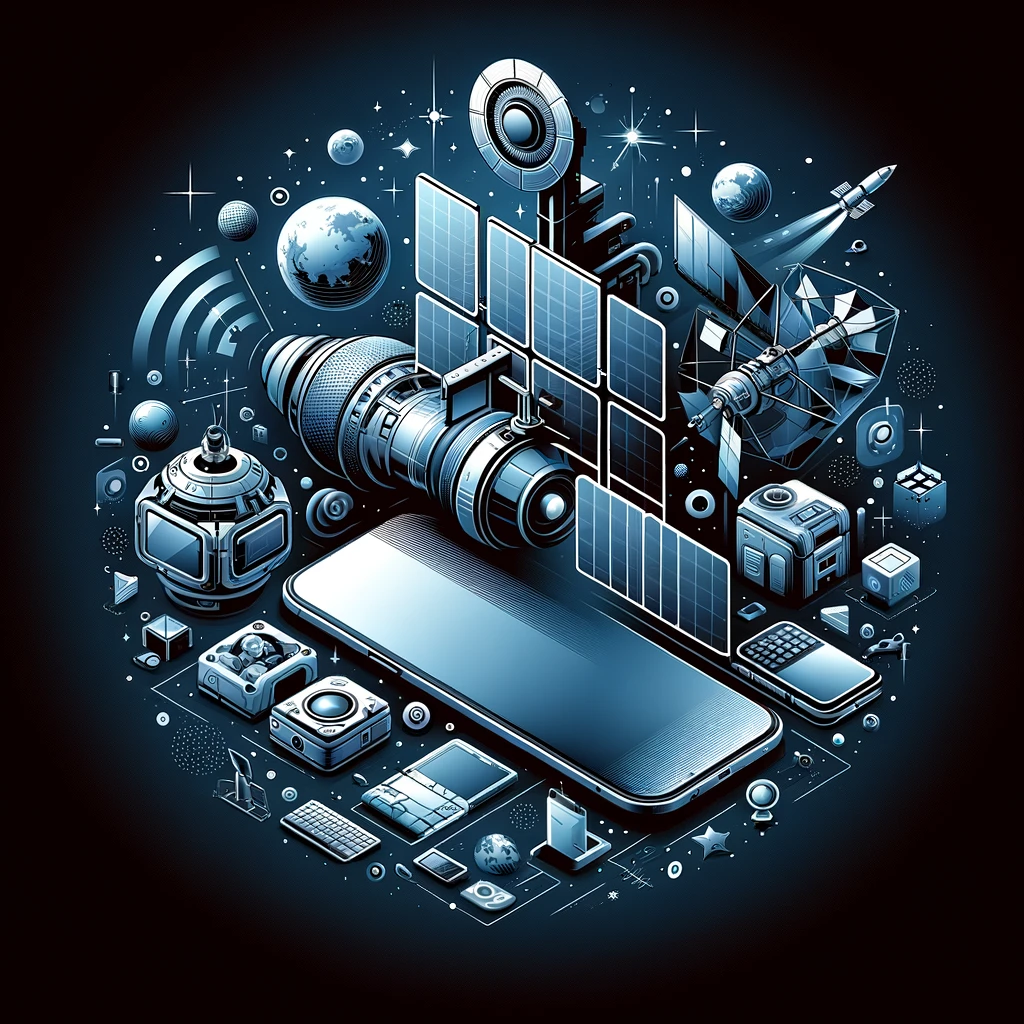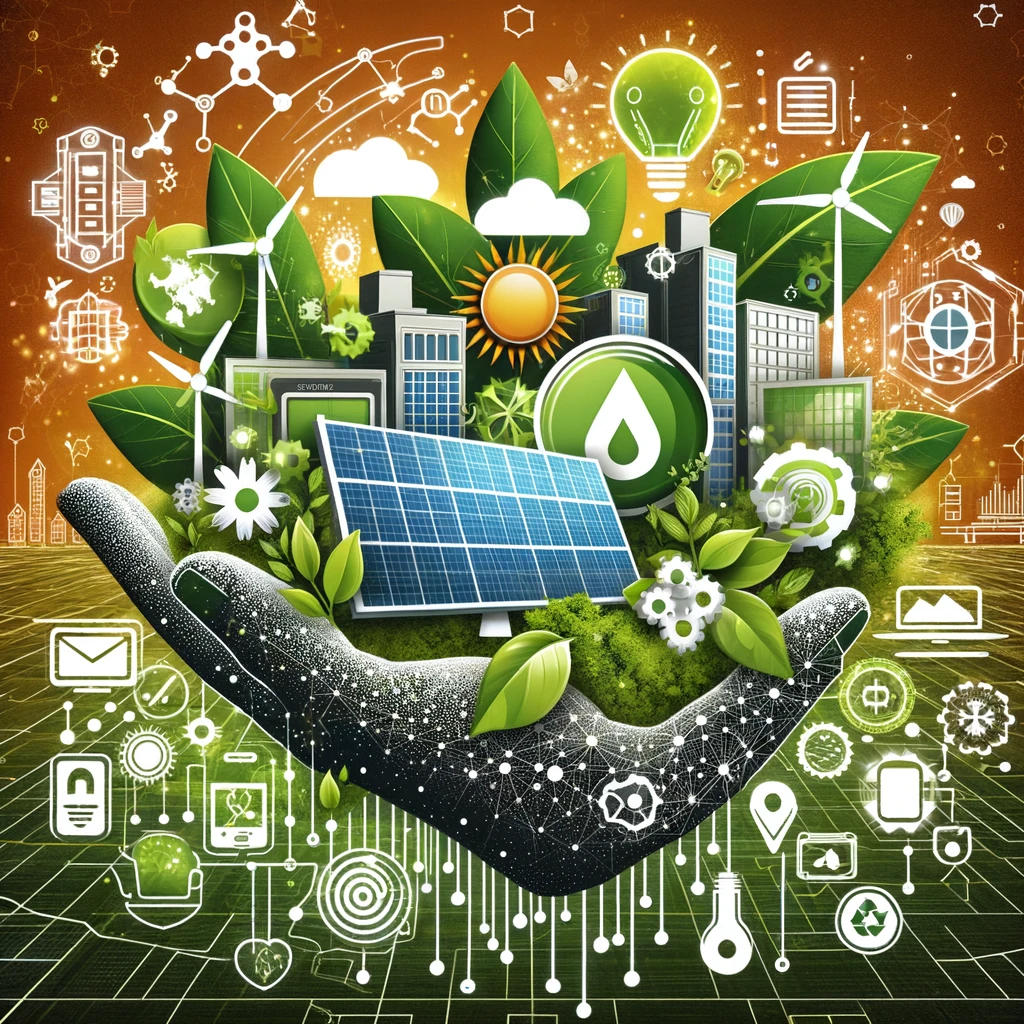Contents
- 1 Introduction to Emerging Tech Trends
- 2 AI and Machine Learning Advances
- 3 Blockchain Technology in Tech
- 4 Quantum Computing Developments
- 5 Emerging Tech Trends with Biotechnology in Consumer Tech
- 6 Emerging Tech Trends with Nanotechnology in Gadgets
- 7 Emerging Tech Trends with 5G and Its Impact on Tech
- 8 Emerging Tech Trends with Space Tech for Consumers
- 9 Cybersecurity Trends
- 10 Sustainable Tech Innovations
- 11 Emerging Tech Trends with The Future of Work and Tech
- 12 Frequently Asked Questions about Emerging Tech Trends
- 12.1 What are the key advancements in AI and Machine Learning?
- 12.2 How is Blockchain Technology influencing the tech industry?
- 12.3 What are the latest developments in Quantum Computing?
- 12.4 How does Biotechnology impact consumer tech products?
- 12.5 What role does 5G play in shaping future tech trends?
- 12.6 How can I stay up to date on the latest emerging tech trends?
Introduction to Emerging Tech Trends
The Rapid Evolution of Emerging Tech Trends
The world is witnessing an unprecedented pace of technological advancement, including new technology trends and advanced robotics, shaping various aspects of our lives. From artificial intelligence (AI) to quantum computing and 5G technology, new innovations are driving significant changes across industries. For example, AI and robots are revolutionizing customer service by automating processes and personalizing interactions, while 5G technology promises faster internet speeds and improved connectivity for a wide range of devices.
In the field of biotechnology, advancements have led to groundbreaking research in areas such as gene editing and personalized medicine. Nanotechnology has also made strides in fields like materials science and electronics manufacturing through the development of smaller, more efficient components. These emerging technology trends are not only transforming existing industries but also creating entirely new ones that were previously unimaginable.
Importance of Understanding Emerging Tech Trends
Understanding these emerging tech trends is crucial for individuals, companies, and developers alike. It enables them to stay relevant in a rapidly changing landscape by adapting to the latest developments. Embracing these trends fosters adaptability, allowing companies to innovate their products or services according to market demands.
Moreover, gaining insights into emerging tech trends helps organizations make informed decisions about where to invest their resources for future growth. For instance, early adoption of blockchain technology can enhance trust and transparency within supply chains or financial transactions for both enterprises and consumers. Similarly, staying updated on cybersecurity measures is vital for safeguarding sensitive company data from evolving threats posed by malicious actors.
AI and Machine Learning Advances
Revolutionizing Data Analysis and Automation

AI and machine learning have transformed the way data is analyzed, leading to more efficient processes. For instance, in e-commerce, these technologies enable personalized product recommendations based on individual browsing history. This level of personalization enhances user experience by providing relevant content tailored to each user’s preferences.
Furthermore, in the realm of finance, AI-driven algorithms are utilized for fraud detection and risk assessment, safeguarding financial transactions from potential threats.
The advancements in AI have also paved the way for predictive analytics that forecast future trends based on historical data patterns. This capability enables businesses to make informed decisions regarding inventory management and customer demand forecasting. Moreover, machine learning applications extend across diverse sectors such as healthcare where they play a crucial role in diagnostics and devising personalized treatment plans for patients based on their medical history.
Real-World Applications and Future Potential
The practical applications of AI span from virtual assistants like Siri or Alexa to more complex innovations such as autonomous vehicles. These technological marvels demonstrate how AI can be integrated into everyday life while also showcasing its potential impact on various industries globally. Looking ahead, advanced robotics represent an exciting frontier within this domain with endless possibilities for automation in manufacturing processes or even household chores.
In addition to enhancing daily activities through voice recognition systems and recommendation engines used by popular streaming services like Netflix or Spotify, machine learning has immense future potential beyond these consumer-focused areas. The integration of machine learning algorithms into decision-making processes will lead to enhanced efficiency across multiple industries including supply chain management where optimized routes can be determined using predictive analysis.
Impact on Various Industries and Everyday Life
The influence of AI extends far beyond just business applications; it significantly impacts healthcare through improved diagnostics powered by image recognition technology which assists doctors in identifying anomalies within medical scans accurately. Similarly, personalized treatment plans devised using patient-specific data represent another breakthrough facilitated by these technologies.
Moreover, everyday life is enriched through seamless voice recognition systems that understand natural language commands effortlessly due to continuous improvements driven by machine learning models refining their accuracy over time based on user interactions with devices like smartphones or smart speakers.
Blockchain Technology in Tech
Demystifying blockchain beyond cryptocurrencies
Blockchain technology extends beyond cryptocurrencies. Its secure decentralized ledger system ensures transparency and immutability, making it suitable for various applications. For instance, in supply chain management, blockchain allows tracking products from their origin to the end consumer. This enhances transparency and helps prevent counterfeit goods from entering the market.

Moreover, voting systems can benefit greatly from blockchain technology due to its ability to provide a secure and tamper-proof record of votes cast. By leveraging this technology, governments can ensure fair elections with minimal risk of manipulation or fraud. smart contracts, which are based on blockchain technology, streamline business processes by automatically enforcing the terms of an agreement when predefined conditions are met.
Innovative uses of blockchain in different sectors
In real estate, innovative uses of blockchain technology include facilitating transparent property transactions. It enables parties involved in real estate deals to securely store transaction records while ensuring that they cannot be altered or tampered with after being recorded.
Furthermore, within the healthcare sector, utilizing blockchain for secure patient data management and interoperability is gaining traction. The implementation of this technology can help maintain the integrity and privacy of sensitive patient information while allowing authorized entities to access necessary data efficiently.
Another notable application is seen in provenance tracking within the food industry. Through blockchain, consumers can trace a product’s journey from its source through every point until it reaches them as a finished item on store shelves or at their doorstep.
Future implications and developments in blockchain technology
The future implications of blockchain technology are far-reaching; increased adoption is expected across governance systems worldwide due to its potential for enhancing transparency and accountability.
As for developments focusing on scalability solutions, efforts aim at accommodating a broader user base more efficiently without compromising security or performance standards. Interoperability between different blockchains represents another key area for future advancements; achieving seamless communication between varied blockchains will further enhance their overall utility across diverse industries.
Quantum Computing Developments

Quantum computing utilizes quantum mechanics principles for exponentially faster processing speeds. Its potential lies in solving complex problems unsolvable by classical computers, such as drug discovery simulations. The revolutionary potential of quantum computing extends to cryptography, optimization, and material science.
The power of quantum computing is evident in the ability to process vast amounts of data simultaneously. For example, it can efficiently analyze numerous variables involved in financial modeling, leading to more accurate predictions and risk assessments. This has significant implications for industries reliant on data analysis and prediction models.
Current state of quantum computing research and development.
Quantum computing research focuses on error correction methods to improve computational accuracy. Development efforts aim to create scalable quantum processors with more stable qubits. Collaborations between academia, industry, and government drive advancements in quantum computing by pooling resources and expertise toward a common goal.
In the realm of software development, the emergence of quantum algorithms presents both opportunities and challenges. Software developers are exploring ways to leverage these algorithms for tasks that require immense computational power or involve complex problem-solving processes. However, this also necessitates acquiring new skills due to the fundamentally different nature of programming for quantum computers compared to classical ones.
How quantum computing could reshape industries.
Industries across various sectors are poised for transformation through the integration of quantum technology into their operations. In software development specifically, there is anticipation surrounding the creation of applications optimized for running on future quantum computers. These applications would harness the unique capabilities offered by quantum processing while addressing specific industry needs.
Emerging Tech Trends with Biotechnology in Consumer Tech
The fusion of biotech with consumer technology is revolutionizing the way people interact with everyday products.
From wearable health monitoring devices to personalized nutrition analysis, biotech intersects with consumer tech in various innovative ways. For instance, bio-engineered materials are enhancing the durability and sustainability of consumer products, contributing to a more eco-friendly approach.

Recent innovations have led to the integration of biometric authentication features into consumer products, leveraging advancements in biotechnology. Moreover, bioinformatics has paved the way for personalized healthcare solutions accessible through common consumer devices such as smartphones and smartwatches. These advancements are not only making technology more intuitive but also enhancing its ability to cater to individual needs and preferences.
Ethical considerations play a crucial role in shaping the future prospects of biotech in consumer tech. With genetic privacy issues arising from biotech integration, it becomes essential to establish ethical frameworks for gene editing technologies within consumer applications. Balancing innovation with ethical considerations remains pivotal for ensuring that these emerging technologies are utilized responsibly and ethically.
Emerging Tech Trends with Nanotechnology in Gadgets
Nanotechnology has revolutionized modern gadgets, enhancing display screens with improved resolution. This technology utilizes nanomaterials to create lightweight yet durable components for everyday tech devices. The integration of nanotechnology contributes to the development of energy-efficient features in modern gadgets.
Gadgets benefit from nanotechnology-enabled water-repellent coatings, protecting them from moisture and environmental damage. Nanotechnology advancements enable the miniaturization of electronic components within tech devices, leading to more compact and efficient designs. Furthermore, the application of nanoscale materials results in improved battery performance, addressing one of the major challenges faced by consumer electronics.
The future landscape of consumer electronics will witness remarkable developments driven by nanotechnology. Nanotech-driven self-cleaning surfaces integrated into consumer electronics are expected to become a standard feature in future products. Moreover, flexible yet robust materials made possible through nanotechnology will be used in next-gen consumer electronics, ensuring durability without compromising on flexibility. Furthermore, energy storage capabilities are set to be significantly enhanced through the utilization of nanotechnology.
Emerging Tech Trends with 5G and Its Impact on Tech
Unpacking the significance of 5G technology

The advent of 5G brings ultra-fast connectivity, revolutionizing streaming experiences. With low latency, it enables real-time communication across various applications. For instance, in smart cities, 5G facilitates seamless connections between numerous IoT devices.
This transformative technology also impacts connectivity and communication. It supports massive IoT deployments in smart cities, transforming the way devices interact with each other. Furthermore, augmented reality (AR) applications powered by 5G networks redefine communication experiences by offering immersive and interactive features.
The transformative effects of 5G on connectivity and communication
With its enhanced mobile broadband capabilities, 5G delivers high-definition video streaming on-the-go. This means that users can enjoy superior quality content even in transit or remote locations where traditional broadband might falter.
Moreover, future developments are set to expand 5G coverage into remote rural areas worldwide. Global rollout initiatives aim to establish standardized infrastructure supporting diverse use cases for this cutting-edge technology.
Future developments and global rollout of 5G
Collaborative efforts among international stakeholders drive agreements ensuring seamless global 5G connectivity. These efforts will pave the way for a world where everyone has access to reliable and fast internet through their mobile devices.
Emerging Tech Trends with Space Tech for Consumers
The growing influence of space technology in consumer markets is undeniable. For instance, GPS navigation systems have become an integral part of consumers’ daily lives. Whether it’s finding the fastest route to a destination or locating a nearby restaurant, GPS technology has revolutionized how people navigate the world.

Moreover, space tech innovations have made their way into consumer markets through satellite internet services such as Starlink. These services provide global connectivity, enabling individuals and businesses to stay connected regardless of their location. This means that even in remote areas, people can access high-speed internet thanks to satellites orbiting the Earth.
Space technology also impacts consumer markets through satellite imaging, which enhances location-based services. From real-time traffic updates to interactive maps, consumers benefit from the accuracy and reliability of satellite imaging technologies.
Examples of Space Tech Innovations Becoming Mainstream
- GPS navigation systems utilized daily by consumers.
- Satellite internet services providing global connectivity.
- Satellite imaging enhancing location-based services.
The future holds exciting prospects for space technology in everyday life. For example, space-based solar power could contribute significantly to sustainable energy solutions for everyday use. Imagine relying on solar energy captured from space to power homes and businesses on Earth.
As space debris continues to be a concern for satellite operations, advancements in space debris mitigation technologies will ensure safe and uninterrupted satellite operations essential for various consumer applications.
Furthermore, developments in space tourism promise transformative experiences accessible for everyday individuals. In the not-so-distant future, people may have the opportunity to venture beyond Earth’s atmosphere and experience outer space firsthand.
Cybersecurity Trends
Current trends and challenges in cybersecurity

The emerging tech trends in cybersecurity are a response to the increasing sophistication of cyber threats. For instance, the rise of ransomware attacks targeting critical infrastructure systems has become a prominent trend. These attacks can disrupt essential services like energy distribution or healthcare facilities, posing significant challenges for organizations and governments.
Another challenge is securing interconnected IoT devices, which are often vulnerable to cyber threats due to their diverse range of applications and limited built-in security measures. As more devices become connected to the internet, ensuring their protection against potential breaches becomes increasingly complex.
Furthermore, cybersecurity trends highlight an increasing reliance on AI-driven threat detection mechanisms. This approach allows organizations to proactively identify and respond to emerging cyber threats by leveraging artificial intelligence technologies.
Sustainable Tech Innovations
Driving Sustainable Technology Innovations
Sustainable technology, including renewable energy breakthroughs and eco-friendly materials, is revolutionizing various industries. For instance, the development of advanced solar panels and wind turbines has significantly increased power generation from sustainable sources. These innovations are crucial in reducing reliance on fossil fuels and decreasing carbon emissions.

The emergence of eco-friendly materials has led to a substantial reduction in environmental impact across industries. Companies are now utilizing biodegradable packaging materials and recyclable products to minimize their ecological footprint. Such advancements not only benefit the environment but also enhance brand reputation by demonstrating a commitment to sustainability.
Moreover, advancements like carbon capture technologies play a pivotal role in mitigating climate change effects. These innovative solutions effectively capture carbon dioxide emissions from industrial processes and prevent them from entering the atmosphere. By doing so, they contribute significantly to global efforts aimed at combating climate change.
Addressing Environmental Challenges with Emerging Tech Trends
Technology is instrumental in addressing environmental challenges through various means such as precision agriculture techniques that optimize resource usage. Through the use of sensors and data analytics, farmers can precisely monitor soil conditions, water usage, and crop health to maximize agricultural productivity while minimizing resource wastage.
Furthermore, IoT-enabled smart waste management systems have emerged as an effective solution for minimizing ecological impact. These systems utilize connected devices to streamline waste collection processes and enable efficient recycling practices. As a result, they contribute towards reducing pollution levels while promoting sustainable waste management practices.
In addition to this Cybersecurity Trends section’s focus on technological security measures against cyber threats for emerging tech trends’ protection; it is important also highlight how technology facilitates real-time environmental monitoring aiding proactive conservation efforts by providing accurate data on air quality levels or wildlife population dynamics.
Future Trends in Green Technology
Future trends indicate significant advancements in energy-efficient building designs that promote sustainability by integrating features such as passive heating/cooling systems or smart lighting controls. Moreover, there is an increasing emphasis on developing eco-friendly gadgets featuring recyclable materials that reduce electronic waste accumulation. Lastly future trends encompass widespread adoption of electric vehicles powered by renewable energy sources which aligns with both cybersecurity issues related with these emerging tech trends along with their benefits for sustainable living.
Emerging Tech Trends with The Future of Work and Tech
Reshaping the Workplace with Technology

Technology is reshaping the workplace in various ways. For instance, remote collaboration tools have enabled global team interactions, breaking down geographical barriers. Automation technologies play a crucial role by streamlining repetitive tasks, allowing employees to focus on more strategic initiatives.
This has significantly increased productivity and efficiency within organizations. Furthermore, workplace transformation involves the integration of AI-powered analytics that enhance decision-making processes, providing valuable insights for informed business strategies.
In addition to this, the rise of remote work and digital collaboration tools has been notable. Advanced video conferencing platforms have facilitated virtual meetings, leading to an increase in remote work opportunities. Moreover, digital collaboration tools have enabled seamless document sharing across geographies, fostering efficient teamwork among employees located in different parts of the world. Cloud-based project management solutions are also contributing to the thriving culture of remote work by ensuring productivity and effective communication among teams.
Predictions for the Future of Work in a Tech-Centric World
As we move towards a tech-centric world, several predictions for the future of work have emerged. One such prediction involves an increased adoption of telecommuting as organizations embrace flexible work arrangements to accommodate diverse employee needs while maintaining operational efficiency. It is anticipated that the future workplace will integrate augmented reality (AR) technologies, enhancing immersive training experiences for employees across various industries.
Furthermore, tech-centric work environments are expected to prioritize cybersecurity measures due to growing digital dependencies within organizations worldwide. As technology continues to advance rapidly and becomes increasingly integrated into daily operations across industries such as healthcare or finance; cybersecurity will become even more critical in safeguarding sensitive data from potential cyber threats.
Frequently Asked Questions about Emerging Tech Trends
What are the key advancements in AI and Machine Learning?
AI and machine learning have made significant strides in natural language processing, computer vision, and autonomous systems. These technologies are being widely applied in various industries to improve efficiency, decision-making processes, and customer experiences.
How is Blockchain Technology influencing the tech industry?
Blockchain technology has revolutionized data security, transparency, and decentralized transactions. It’s impacting sectors like finance, healthcare, supply chain management by providing secure digital ledgers for recording transactions.
What are the latest developments in Quantum Computing?
Quantum computing is making breakthroughs in solving complex problems at an unprecedented speed. Researchers are exploring its potential applications in cryptography, drug discovery, weather forecasting, and optimization challenges.
How does Biotechnology impact consumer tech products?
Biotechnology is driving innovation in wearable health devices, personalized medicine apps, sustainable materials for electronics production. It’s enhancing user experience by integrating biological insights into consumer technology solutions.
What role does 5G play in shaping future tech trends?
5G technology promises ultra-fast connectivity with minimal latency. This will enable advancements such as augmented reality applications, smart city infrastructure development, remote robotic surgeries among other transformative technological innovations.
How can I stay up to date on the latest emerging tech trends?
You can keep up to date on emerging tech trends and learn about all sorts of cool tech gadgets and accessories on Tech with Bobbie! With over 2 decades of experience in everything from various tech and computer science fields we’re aiming to be your Tech Information HQ!

